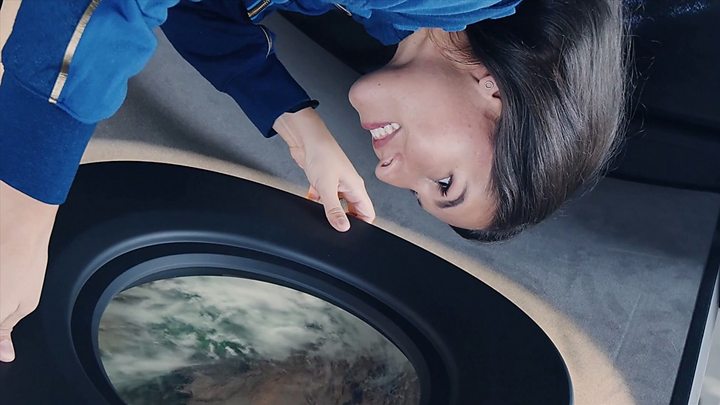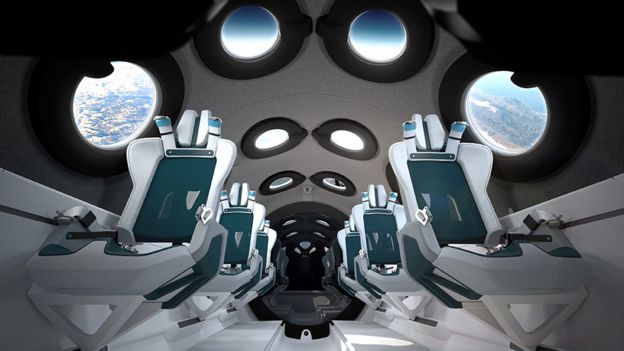Virgin Galactic set for last key rocket test flights

Virgin Galactic is about to start a key series of powered test flights of its passenger rocket plane.
The company's Unity vehicle has so far conducted only glide flights after moving into its operational base in New Mexico earlier this year.
The powered ascents will see Unity ignite its hybrid rocket motor to climb to the edge of space.
These tests will set the stage for Virgin Galactic to introduce its commercial service.
- Branson space rocket fails on debut flight
- Virgin spaceship moves to operational base
- Virgin's Unity plane rockets skyward
Six hundred individuals have so far paid deposits to take a ride on Unity, with many of these individuals having put down their money a good number of years ago.
But George Whitesides, the company's chief space officer, said their wait would soon be over.
"Our next flight will be just purely two pilots in the front to do a systems check," he told BBC News.
"And then, once we've done that - well, we're in pretty exciting territory because the plan is to start putting [four of our] people in the back. We haven't shared exactly how many flights that will be because we've got to see how it goes. But it could be a fairly small number."
Commercial service would begin thereafter.
 Virgin Galactic
Virgin Galactic
To whet the appetite of its would-be astronauts, Virgin Galactic released details on Tuesday of the look of Unity's six-person passenger cabin.
It's a collaborative effort with the London design agency Seymourpowell.
Individually sized seats will move to manage G-forces in the different phases of flight - on the boost up to space and on the descent back to Earth. Personal seat-back screens will display live flight data, and the 12 large windows will ensure no passenger ever has to compete for a view when they unbuckle at the top of the climb to float free inside the cabin.
Sixteen cameras will also capture and record their experience.
"This is going to be the most amazing cabin ever to fly in space," enthused Mr Whitesides, who recently stepped aside from the CEO role.
"We've got this amazing mirror in the back of the cabin. I think that's going to be one of the coolest things because people will have the experience of being able to see themselves in space."
 Virgin Galactic
Virgin Galactic
Virgin Galactic already has its commercial operating licence from the US Federal Aviation Administration, but it has to work through a list of "verification and validation" milestones before it can welcome passengers aboard. The company also needs to practise the cabin procedures that will keep those passengers safe and ensure they get the most pleasurable ride possible.
The upcoming powered flights are in large part about locking down these procedures.
As well as installing ex-Disney Parks president Michael Colglazier as the new chief executive, Virgin Galactic has signed a couple of agreements recently with the US space agency.
These will see Galactic work with Nasa on developing technologies for advanced passenger flight at supersonic and hypersonic speeds; and on efforts to further commercialise activities in low-Earth orbit.
Virgin Galactic was founded in 2004 by British entrepreneur Sir Richard Branson.
His goal was to take the concept behind SpaceShipOne, the first private rocket plane to reach sub-orbital space that same year, and turn it into a "tourist" venture.
But developing this idea has proven extremely difficult, technically.
Barring any unexpected events in the next few months, however, Sir Richard does now seem very close to realising his dream.
Comments
Post a Comment